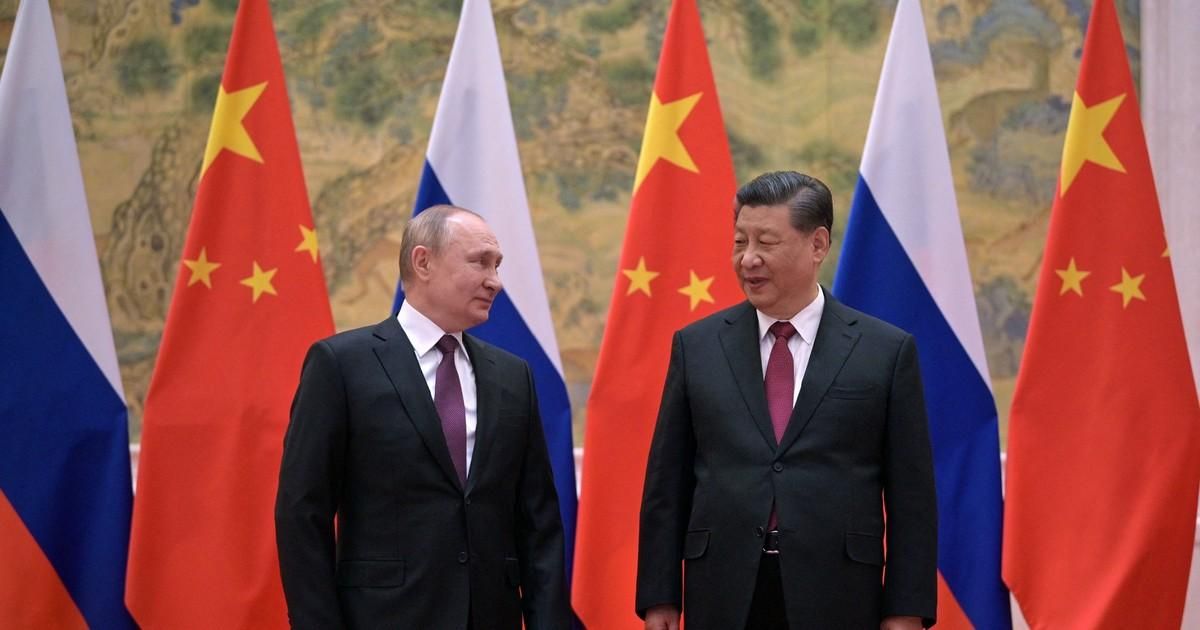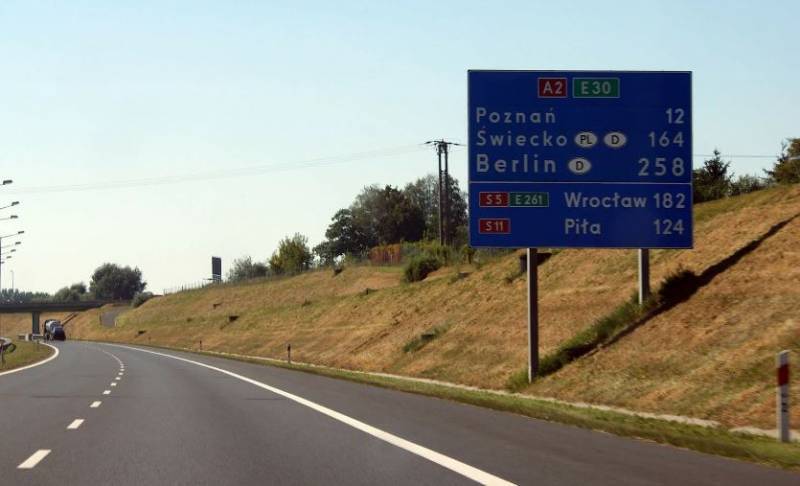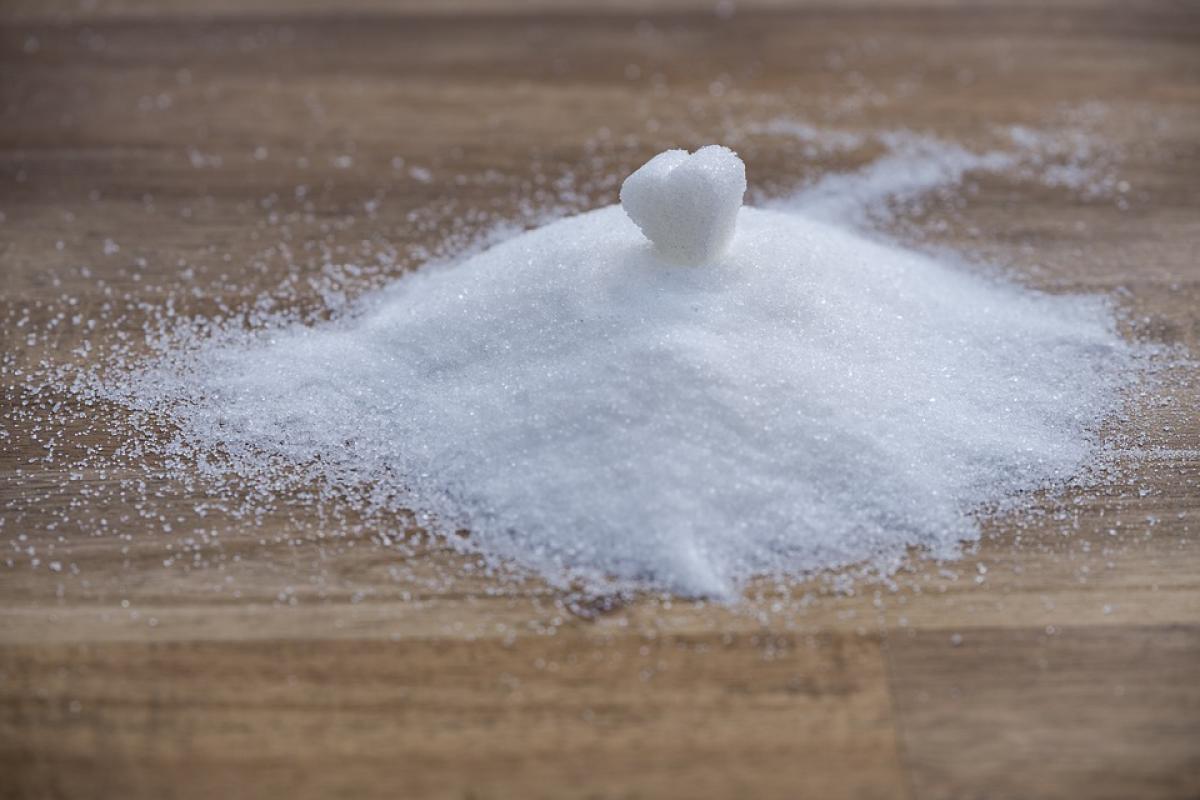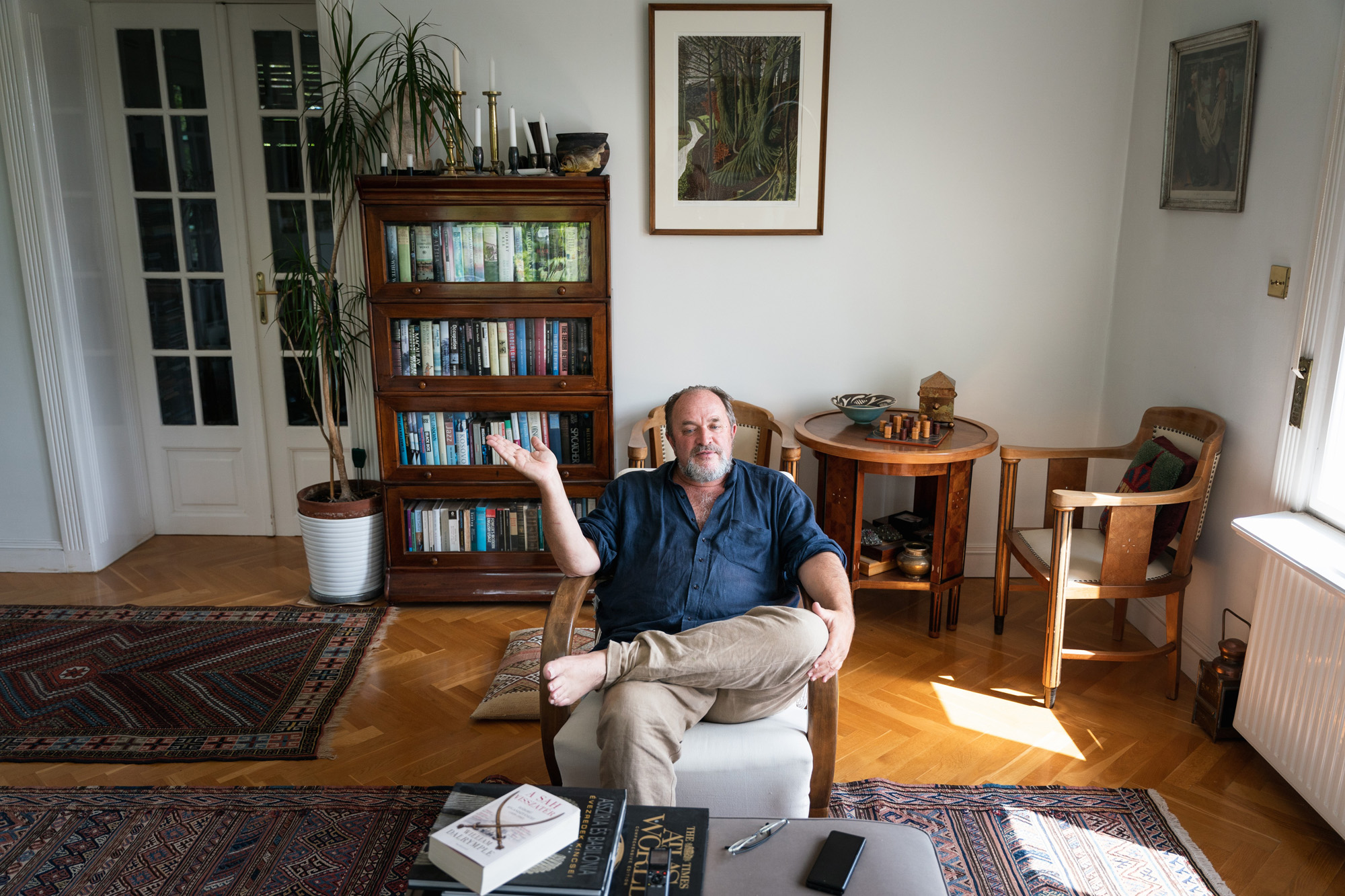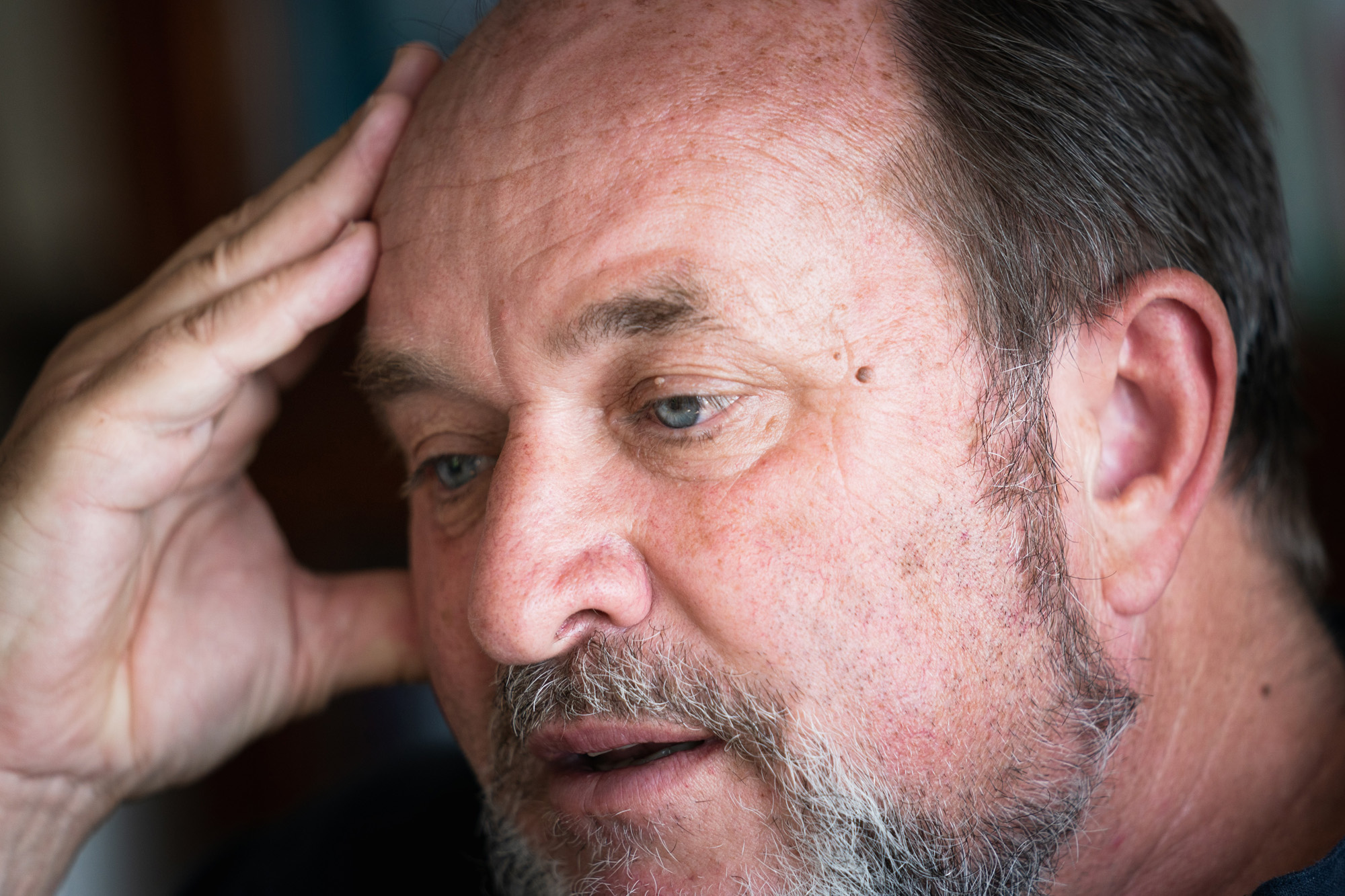ArcelorMittal’s Kryviy Rih plant CEO Mauro Longobardo says he has done all he can to keep the plant running © Ueslei Marcelino/Reuters
Russia’s forcing of a completely intact steel plant to the verge of a complete shutdown is a case study in economic warfare. Sitting in his office in Kyiv, Longobardo, the Italian CEO recruited to Ukraine by the Indian-British steel magnate Lakshmi Mittal, details the six-month transformation from a bustling and profitable enterprise to a moribund firm waiting for decisions outside its control to return to life.
The defence of Kryviy Rih, which means “crooked horn”, is already the stuff of legend in Ukraine. Despite being Zelenskyy’s hometown, it found itself without any military protection in the early days of the war and was run by Mayor Oleksandr Vilkul, a former vice-prime minister once considered one of Ukraine’s most pro-Russian politicians.
Oleksandr Vilkul said he grabbed explosives to blow up bridges and a tunnel to slow the Russian advance © Roman Olearchyk/FT
Vilkul, who had worked in the mines as an explosives expert, says he knew the Russians would come for the strategically important city, centrally located with its steel plant and iron ore deposits. So he grabbed explosives from a nearby mine and blew up the bridges and a tunnel on the road to the city. He then blocked a highway with the massive trucks used to carry ore, cutting off a 150-vehicle Russian convoy.
“We defended ourselves with what we could,” he says, showing off a hand-cranked detonator from the 1970s that he had pressed into service. “The lines on the map were moving fast, and someone had to take responsibility.”
At the plant, Longobardo ordered the blast furnaces to be cooled down (a process that takes days) and sent all non-essential staff home. “The enemy was very close — a single . . . bomb could have been catastrophic,” says Valeriy Sorukhan, a foreman.
But the fate of the plant had already been decided far away from Kryviy Rih. In the north, the Ukrainian military had blown up the railway lines from Russia, which normally brought in the coal that heats the furnaces to more than 1,500C. In the south, Russian gunships formed an offshore blockade after the Ukrainians laid down sea mines at the port of Odesa to ward off amphibious assaults.
Air strikes hit the key Ukrainian port of Odesa in April © Bulent Kilic/AFP/Getty Images
Months later, Longobardo is still unable to revive the plant profitably. He was able to keep the iron ore mines open but, with his own blast furnaces turned off, he had to try to sell the ore. “Same problem — even if you solve the logistics, it’s $100 a ton more expensive,” he says, growing frantic as he recounts the different ways he tried to make the business work by shipping steel and ore via rail to a port in Poland, instead of through the Black Sea. “With all these extra costs I can’t even sell a single ton of steel without losses.”
At one point he was breaking even and then steel prices started falling as the global economy cooled. His product was even less competitive — as much as $120 more than the market price to produce and $130 a ton extra to get to his customer.
It took months, he says, to accept the inevitable. Without the port of Odesa, it made no difference that Kryviy Rih was safe, well-fortified and his steel plant was still standing with his workforce intact. “Without the port, there is no metal industry in Ukraine,” he says. “We have done everything that we could.”
The Kryviy Rih plant still has 26,000 employees on the payroll © Julia Kravchenko/Bloomberg
It turned out that Russia didn’t need to take Kryviy Rih to nearly finish off one of Ukraine’s largest employers and its last remaining major steel plant. With the Mariupol steelworks under Russian control, “we are now one of the biggest taxpayers”, he says. “If we do not produce, there is no money coming to the government.”
Now, Longobardo keeps the single blast furnace running, mostly for local Ukrainian customers, and is waiting either for global prices to recover or the Black Sea blockade to lift. If neither happens, he will have to shut that down too. As for the 26,000 employees still on the payroll, he says the company’s support “can’t be eternal”.
A diplomatic crowbar
The blockade has given Russia not just economic leverage over Ukraine but also a diplomatic crowbar with which to pry loose some of the strict restrictions on its own exports. In August, it started
letting ships carrying Ukrainian grain run its naval gauntlet to supply volatile global food markets.
But it is extremely unlikely Russia will allow ships carrying steel or coal to follow — Russian steel is itself blocked from European markets and letting Ukrainian steel out would defeat the purpose of the blockade. Already, Moscow has complained that the west has not eased the pressure on Russian exports (a quid pro quo it expected for letting Ukrainian grain out) and suggested it may not renew the food deal in November.
“We need a lifting of sanctions,” says
Gennady Gatilov, Russia’s permanent representative to the UN in Geneva. “We need for the ships to come to the Russian ports and the Russian ships to come to European ports.”
The cost to Ukraine’s economy of the physical destruction from Russia’s missiles and artillery is about $130bn, the Kyiv School of Economics estimated in June, with $26bn in damaged business infrastructure.
“The key is not just the amount of damage, it is that a lot of this destroyed infrastructure was crucial for our export-oriented businesses,” says Taras Kachka, Ukraine’s junior economy minister. “We are trying to maintain our transportation systems, our road and railway functions and, unless we do, our key industries cannot export their goods or receive the inputs they need.”
As the Russian army inches west, the industrialised eastern flank of Ukraine faces a grim choice: either stay put and risk destruction or flee. A vertically integrated steel plant sitting on a seam of iron ore cannot be shifted — for now, the ArcelorMittal facility is stuck. But other factories can be transported elsewhere. Indeed, many in Ukraine are doing just that.
Tank traps outside the Kryviy Rih plant. The front line is only about 50km from the facility © Julia Kochetova/Bloomberg
In May, the 80-year-old Kramatorsk Heavy Machine Tool Plant, which makes wheels for trains, machine lathes and turbines for windmills, decided it was time to move. Russian rockets had landed nearby throughout April and the front line was only about 30km away.
Bit by bit, its 650 employees are now taking apart machines that weigh as much as 30 tons, putting the parts on the back of trucks and reassembling them in an abandoned industrial building 1,500km to the west on the border with Poland. “In the end, we will be stronger, more efficient,” says a manager. “But we will still be angry.”
Additional reporting by Henry Foy in Geneva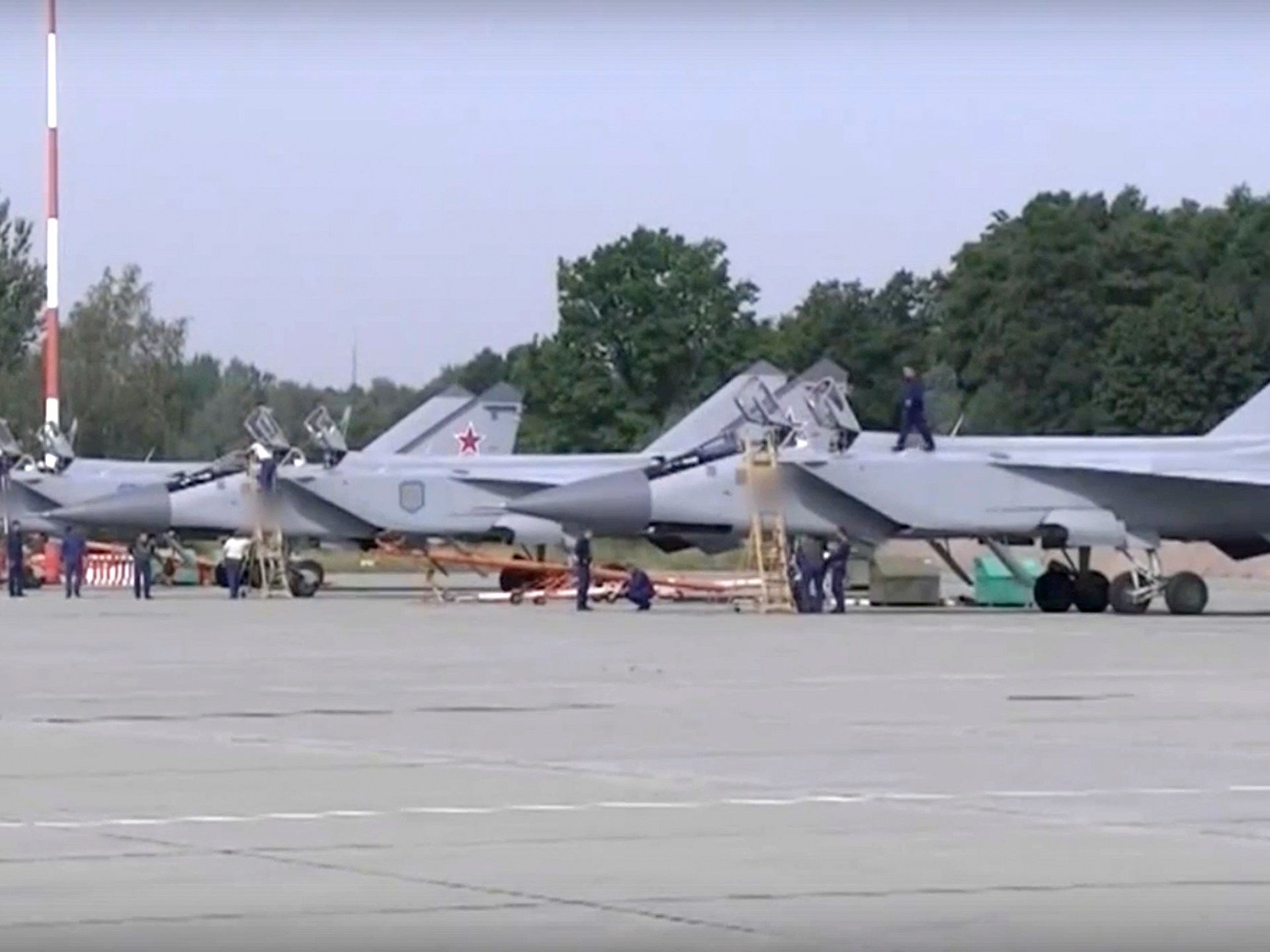
 www.aljazeera.com
www.aljazeera.com


